What oil should I use?
Body Plot • January 26, 2021
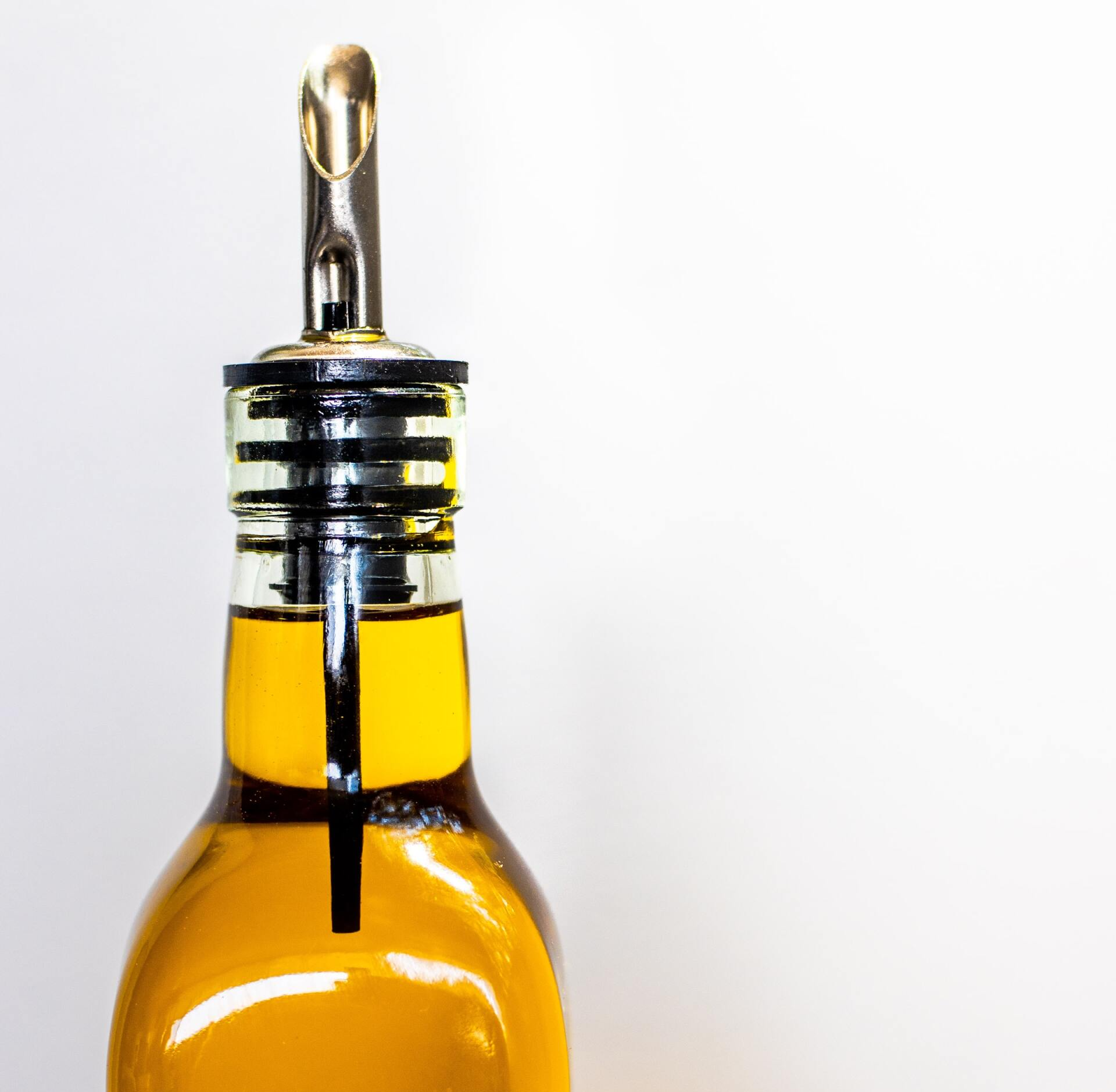
Fats are incredibly important for your health. Fats are a source of Omega 3 and 6 making it incredibly important for joint health in addition to fats being vital for heart health and essential vitamin absorption. There are so many to choose from: walnut, peanut, sunflower, rapeseed, olive, coconut and so many more yet with roughly 120 calories and 14 grams of fat per tablespoon. So how do you choose a healthy oil for cooking?
Monounsaturated, polyunsaturated, and saturated are the different types of fats.The proportion of the different types of fats that make up these oils—is what matters, and can vary dramatically from oil to oil.
Both monounsaturated and polyunsaturated fats—which make up the majority of the fats in most nut, seed, and plant oils—have been linked to a lower risk of obesity, cardiovascular disease, and stroke. It is also a handy substitute for unhealthy saturated fats found in butter, margarine and coconut oil. LDL cholesterol found in unhealthy saturated fat has been linked to cardiovascular disease as the cholesterol builds up plaque in your arteries and can lead to a condition called atherosclerosis which can lead to a heart attack.
However, the type of cooking you are doing plays a large factor in what oil should be used.
Avocado Oil:
The oil derives from the flesh of the avocado instead of the seed.
Taste: It has a light, mild and buttery taste making it a good alternative to olive oil if you find olive oil too strong of a taste. Avocado oil is low in saturated fat and high in monounsaturated fat.
Use for cooking: this oil has a high smoke point and is great for high-heat cooking.
Examples: sauteing, searing - not frying.
Olive Oils:
Extra-virgin olive oil is made from pure, cold-pressed olives, whereas regular olive oil is a blend, including both cold-pressed and processed oils.
Extra virgin olive oil:
EVOO is made by grinding olives into a paste, then pressing them to extract the oil. There's no heat involved, hence the "cold-pressed" label you often encounter. In addition to monounsaturated fats, extra-virgin olive oil has antioxidants and polyphenols that fight cell damage. "It’s also the only vegetable oil that contains a compound called oleocanthal, a potent anti-inflammatory," says Guy Crosby, Ph.D., a certified food scientist and an adjunct professor of nutrition at Harvard.
Taste: It has a grassy and peppery flavour.
Use for cooking: Best for dressings, salads and cold cooking.
Olive oil:
Olive oil is a blend, including both cold-pressed and processed oils.
Taste: A good olive oil tastes of fresh flavors of raw nuts and vegetables, fresh grass or dry hay.
Use for cooking: Olive oil has a relatively lower smoke point compared to other oils, so it's best for low and medium-heat cooking such as low heat sauteing and baking.
Canola / Rapeseed Oil:
The oil derives from the seed of the canola plant
Taste: It has a neutral flavour similar to vegetable oil and is high in heart-healthy monounsaturated fats and omega-3s.
Use for cooking: It's good for medium- to high-heat cooking and is great for bringing out other flavours in the dish. However, it usually comes from GMO plants therefore do try and use organic oils instead.
Examples: sauteing, baking, marinating
Coconut Oil:
The oil derives from the flesh of coconuts.
Taste: It has a mild, sweet coconut flavor. It’s high in a type of saturated fat called lauric acid, which proponents claim makes it healthier than other foods high in saturated fat. But only 12 percent of the oil is lauric acid.
Use for cooking: Refined versions of coconut oil have very high smoke points, so they’re good for frying recipes or in Asian dishes, such as curries. It’s almost all heart-unhealthy saturated fat, though, so it’s best to use this type of oil in moderation.
Examples: curries, shallow frying
Ghee:
Also known as clarified butter is popularly used in India and other parts of Asia. With 65% of this being saturated, there's no evidence that it has any health benefits, and it is comprised of mainly saturated fat," says Lisa Sasson, R.D
Taste: Ghee has a nutty, rich, buttery flavor.
Use for cooking: With the highest smoke point (higher than rapeseed and coconut oil) a small amount can be used in curries,
Examples: curries, shallow frying, baking, sauteing
Conclusion: using oil is a personal decision that should be representative of what you wish to achieve. If you're wishing to lower cholesterol or if you are worried about heart health, you may want to switch with extra virgin olive oil. Or to achieve both of these in addition to lowering body fat you may want to ditch the oil altogether and use water or broth! Broth and water are the most common oil replacements for stovetop cooking as it's really the spices bring out the flavors of food. In baking, you can use unsweetened applesauce or banana to replace oil. To achieve 1 litre of olive oil, you require 5000 - 8000 olives. You can therefore still receive the nutrients by eating the whole olives, nuts, seeds etc.
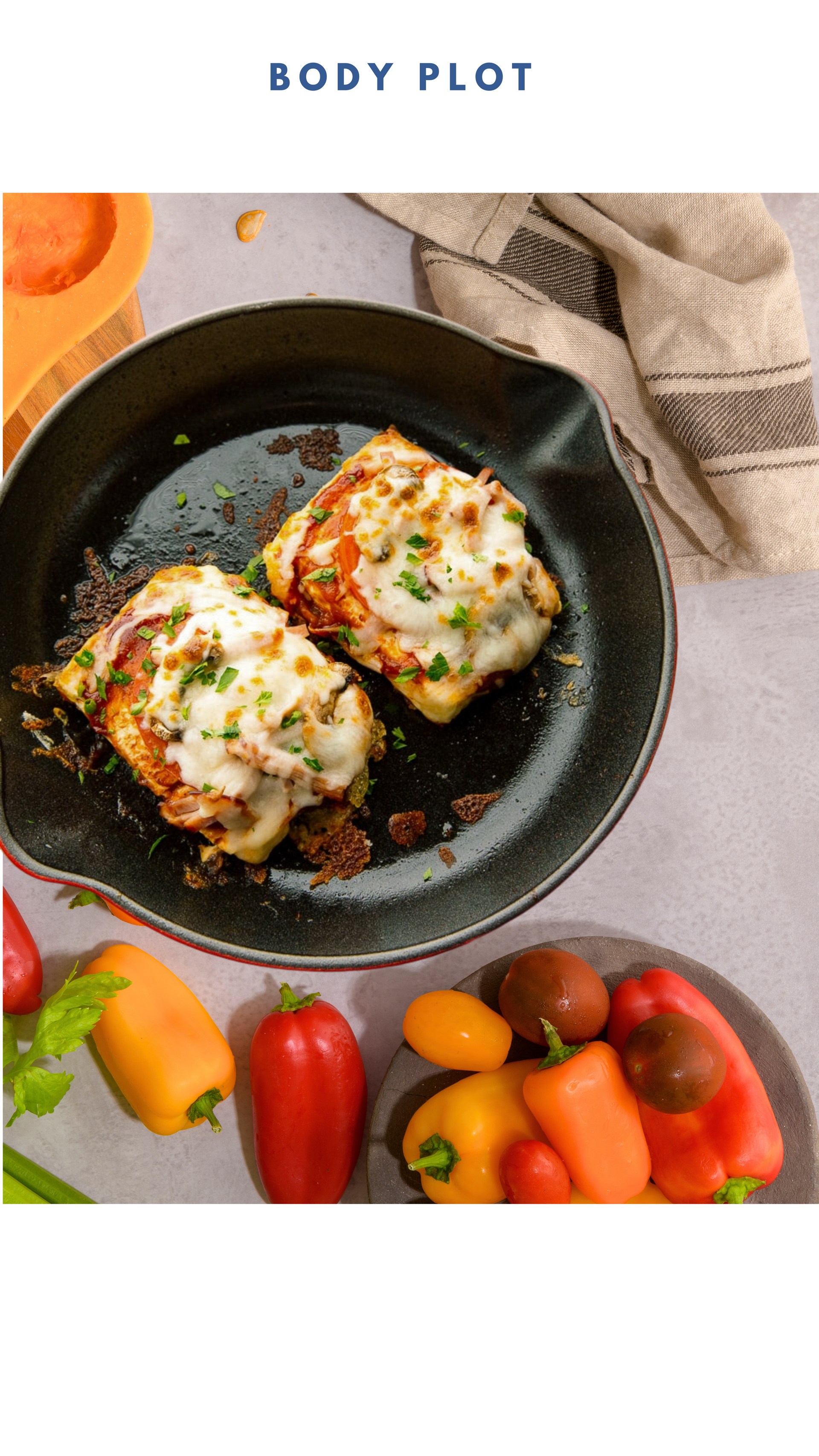
This recipe is such a delicious and nutritious take on pizza! If you've not enjoyed tofu previously, this recipe will change your opinion. Want to have your cake and eat it too? Try: have your pizza and eat it too! Key benefits: - High in Protein - Plant-centric with over 8 vegetables in this one dish - Can be easily made Vegan - Great for lowering cholesterol - Great for menopausal women Ingredients: - 1 block of Tofu [we used basil tofu] - Homemade or store bought tomato sauce - Protein cheese [Eat Lean or LIDL high protein] or Vegan Mozzarella - Vegetables of choice, we used: Aubergines, courgettes, sweetcorn, tomatoes, mushrooms, onions & red peppers - Lower in fat pesto Method: Drain tofu according to instructions on the pack. Cut tofu lengthways - this should result in approximately 3-4 tofu bases. Add these to a oil brushed air fryer or oven and bake at 190 degrees for 12 minutes, turning halfway. Finely dice the vegetables. Top with sauce, vegetables, cheese and pesto and add back into the air fryer or oven for a further 5 minutes until melted. Serve with a side salad and enjoy!

This is the easiest soup ever and ticks all the boxes being: High in fibre, High in protein, Rich in Vitamin C (making it super immune-supporting) and Rich in minerals too.Not only is it full of nourishment but it is an easy win for a delicious Autumnal mid-week dinner! Before we dive into the recipe, let me break down the protein content for you: 20g protein per 2 slices of Jasons protein sourdough 10g protein per bowl of soup 10g from 2 slices of @eatlean cheese And that’s not even including any extra grams of protein from the veggies! So that's a whopping 40g of protein from soup and bread! Ingredients: 2 red onions 4 tomatoes 1 garlic bulb 1 butternut squash 300g silken tofu Celtic Salt Pepper Asofoetida Turmeric 2 slices of Jason’s protein sourdough 2 slices of LIDL or Eatlean protein cheese Method: Chop all the veg, aside from the tomatoes, and roast in the oven with the garlic for 60 minutes at 190 degrees. Add in the tomatoes for the last 30 minutes. Add the roasted veg to a pan and add the tofu and blend with a hand blender. Add turmeric, asofoetida, salt, pepper and stir. I prefer thicker soups. To make the consistency thinner, simply add soya milk and give it a stir. Meanwhile add 2 slices of Jason’s protein sourdough to the grill. Once partially browned, add 1 slice of LIDL or Eatlean Protein cheese to each slice and add back to the oven. Serve your soup and bread!

Happy National Relaxation Day! Today, on August 15th, we have a unique opportunity to pause and reflect on the importance of relaxation in our daily lives—especially in the workplace. At Body Plot, we understand that in demanding professions where the pace is relentless, taking time to relax can feel like a luxury. However, it’s actually an essential part of maintaining a healthy, productive workforce. The Case for Relaxation in the Workplace In numerous working industries, stress often comes with the territory. Whether it’s meeting tight deadlines, managing high-stakes cases, or simply coping with the fast-paced environment, the pressure can be overwhelming. But chronic stress doesn’t just impact individual wellbeing—it also affects organisational health. High levels of stress can lead to increased absenteeism, higher turnover rates, and decreased productivity. This is where the power of relaxation comes into play. When we make space for relaxation, we’re not just improving our mental and physical health; we’re also fostering a more resilient and effective workplace. Here’s how: Reducing Absenteeism: Regular relaxation helps to alleviate stress, which in turn can reduce the risk of stress-related illnesses that often lead to absenteeism. Encouraging your team to take breaks and practice mindfulness can make a significant difference. Improving Retention: Employees who feel supported in their wellbeing are more likely to stay with an organisation. By promoting a culture that values relaxation and self-care, you can improve employee satisfaction and reduce turnover. Boosting Productivity: It might seem counterintuitive, but taking time to relax can actually enhance productivity. A relaxed mind is more focused, creative, and efficient. Regular breaks and wellbeing practices help employees return to their tasks with renewed energy and clarity. Celebrating National Relaxation Day in Your Workplace doesn't just have to be national day - let's embed it! National Relaxation Day is a perfect reminder that relaxation isn’t just a personal practice—it’s a professional priority. Encourage your team to embrace this daily by taking meaningful breaks, practising mindfulness, and participating in activities that promote relaxation. Consider hosting a wellbeing workshop or sharing tips on how to incorporate relaxation into the workday. Let today be the start of a new approach to workplace wellbeing—one that recognises the value of relaxation as a key component of success.
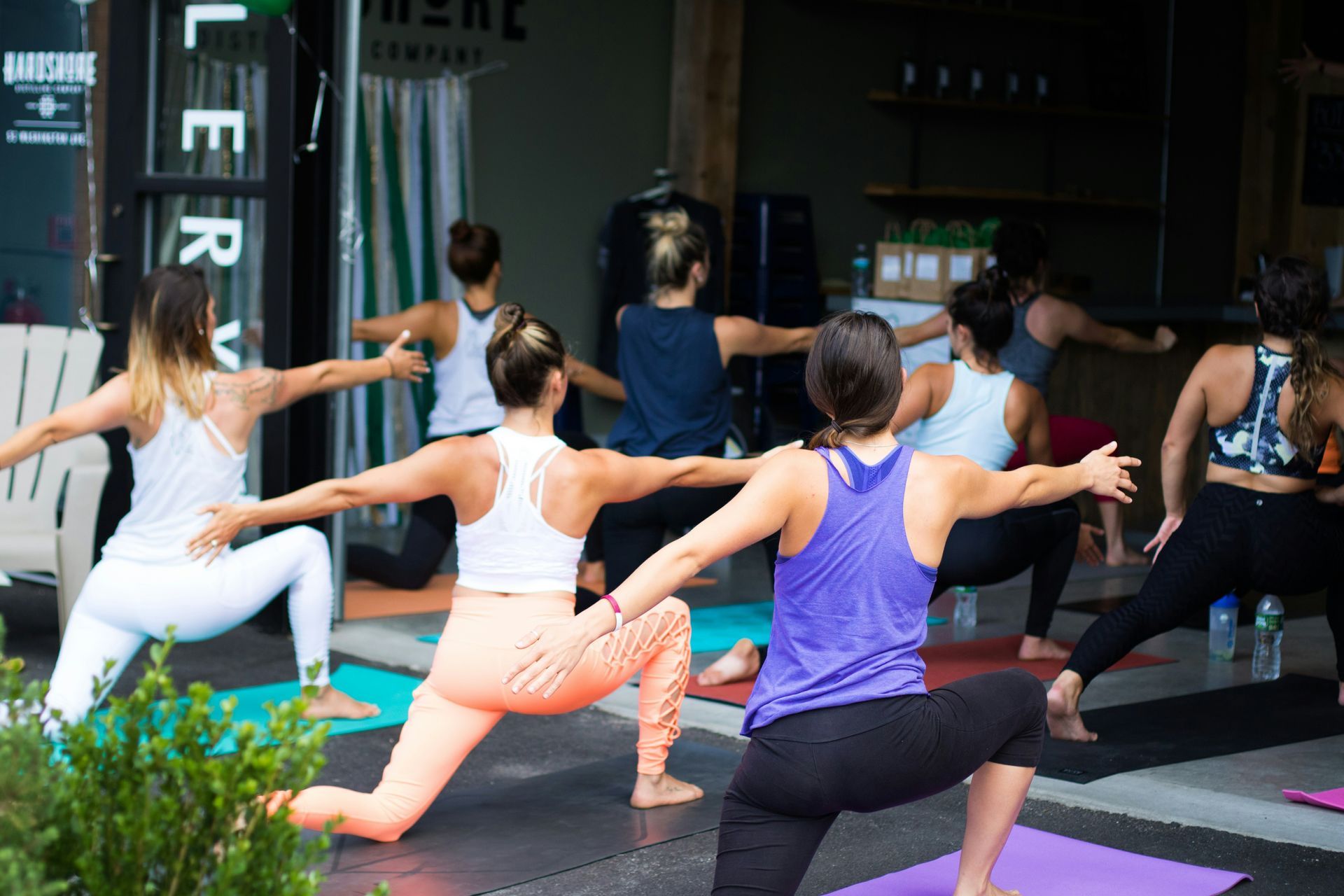
In the hustle and bustle of the modern workplace, the emphasis on productivity often overshadows the crucial aspect of employee wellbeing. Today, we explore a compelling question: Should companies give employees time off to work out during the day? The Case for Midday Workouts At Body Plot, we believe in a holistic approach to wellbeing, encompassing both physical and mental health. Allowing employees to exercise during the workday can yield remarkable benefits: Boosted Mental Health Exercise is a natural stress reliever. It reduces anxiety, alleviates depression, and enhances overall mental well-being. Employees who exercise regularly are likely to be happier, more relaxed, and more resilient to workplace stress. Reduced Absenteeism Healthier employees are less prone to taking sick days. Regular exercise strengthens the immune system and reduces the likelihood of minor illnesses, leading to fewer absences and more consistent performance. Increased Productivity Contrary to the belief that time spent away from the desk is time wasted, studies show that physical activity can enhance cognitive function, improve concentration, and boost energy levels. Employees returning from a workout break often exhibit heightened focus and efficiency, translating to better overall productivity. While the benefits are clear, implementing a workout-friendly policy requires thoughtful consideration: Best Practices for Success Flexible Scheduling Offer flexible hours to allow employees to exercise at times that suit them best. This could mean extended lunch breaks or flexible start and end times. On-Site Facilities If feasible, provide on-site fitness facilities or partner with local gyms to make it easier for employees to access workout opportunities without significant time away from work. Encouragement and Incentives Foster a culture of health and wellness through incentives, such as fitness challenges or rewards for regular exercise, to motivate employees to stay active. Comprehensive Wellbeing Programs Implement a holistic wellbeing program that includes fitness, nutrition, and mental health resources, addressing all aspects of employee wellbeing. At Body Plot, we advocate for a balanced approach that integrates well being into the workday. By supporting employees' physical and mental health through midday workouts, companies can create a more productive, engaged, and loyal workforce. The key lies in thoughtful implementation and a commitment to fostering a culture of health and wellness. Stay well and keep thriving!

As we embark upon the National South Asian Heritage Month today, it's an opportune moment to reflect on the importance of mental health awareness within the South Asian communities in the UK. In many South Asian cultures, mental health issues are often stigmatised, viewed as a sign of weakness or a lack of resilience. This stigma is deeply rooted in societal norms and traditional beliefs, which can discourage individuals from seeking help. The fear of judgement and ostracisation can lead to silence, suffering, and a significant impact on one's quality of life. At Body Plot, we believe in fostering well being for all, and understanding cultural nuances is a crucial part of this mission. Mental Health affects everyone, but there can be certain cultural nuances that make some communities more vulnerable. For instance, South Asian individuals may face unique challenges such as intergenerational conflicts, the pressure to conform to cultural expectations, and the balancing of dual identities, all of which can exacerbate mental health issues if not properly addressed. Lack of access not only affects individuals but also has wider implications for their families and communities. Lack of awareness can include language barriers, cultural misunderstandings, and a lack of culturally competent healthcare professionals. If lack of awareness continues, it can contribute to absenteeism, reduced productivity, and higher turnover rates in the workplace. Our Commitment at Body Plot At Body Plot, we are committed to helping organisations create a supportive and inclusive wellbeing agenda. Here’s how we can support your organisation in addressing mental health challenges within the South Asian community: Culturally Sensitive Workshops: We offer workshops that are tailored to understand and respect cultural differences, helping to break down the stigma and encourage open conversations about mental health. Training for Leaders: Equip your management team with the skills to recognise signs of mental distress and understand the unique challenges faced by South Asian employees. Resource Accessibility: Ensure that mental health resources are accessible in multiple languages and consider cultural sensitivities. Taking Action Promoting mental health awareness and access to care is not just a responsibility; it’s an opportunity to enhance the wellbeing of your entire organisation. By creating a supportive environment, you can help your South Asian employees feel valued and understood, leading to improved overall wellbeing, reduced absenteeism, and increased productivity. This National South Asian Heritage Month, let's take a stand against the stigma surrounding mental health. Together, we can create a more inclusive and supportive workplace for everyone. The Body Plot Team --- Stay tuned for more updates and insights on wellbeing in the workplace. Follow Body Plot for the latest news and tips on promoting health and productivity within your organisation.

One of the most asked questions we get at Bodyplot is, "How can we optimise wellness with simple breathing techniques?" What you'll learn from Body Plot is that wellness through breathing is as unique as the individuals practising it. Our well-being is influenced by many factors, from physical health and lifestyle choices to mental health and work environment. Here’s a fantastic breathing hack you can easily integrate into your daily routine: the 4-4-4 method! The 4-4-4 method, also known as box breathing, is a simple yet powerful technique to calm the mind and body. It involves inhaling, holding, and exhaling the breath in equal counts of four. This technique helps reduce stress, enhance focus, and promotes overall wellness. How to Practise the 4-4-4 Method: 1. Find Your Spot: Sit or lie down comfortably. Keep your back straight and shoulders relaxed. 2. Inhale Deeply: Breathe in through your nose for a count of four. Feel your lungs fill up. 3. Hold Steady: Hold your breath for a count of four. Let the oxygen saturate your body. 4. Exhale Slowly: Exhale through your mouth for a count of four. Release all the tension. 5. Repeat and Relax: Continue this cycle for five minutes or more. Focus on your breath and stay present. Optimising wellness with the 4-4-4 method is all about understanding and supporting your unique needs. At Body Plot, we believe that a happy and healthy life thrives on personalised care. A thriving you is one who feels valued and cared for. For customised wellness workshops, contact us at Body Plot. Let's breathe better together!
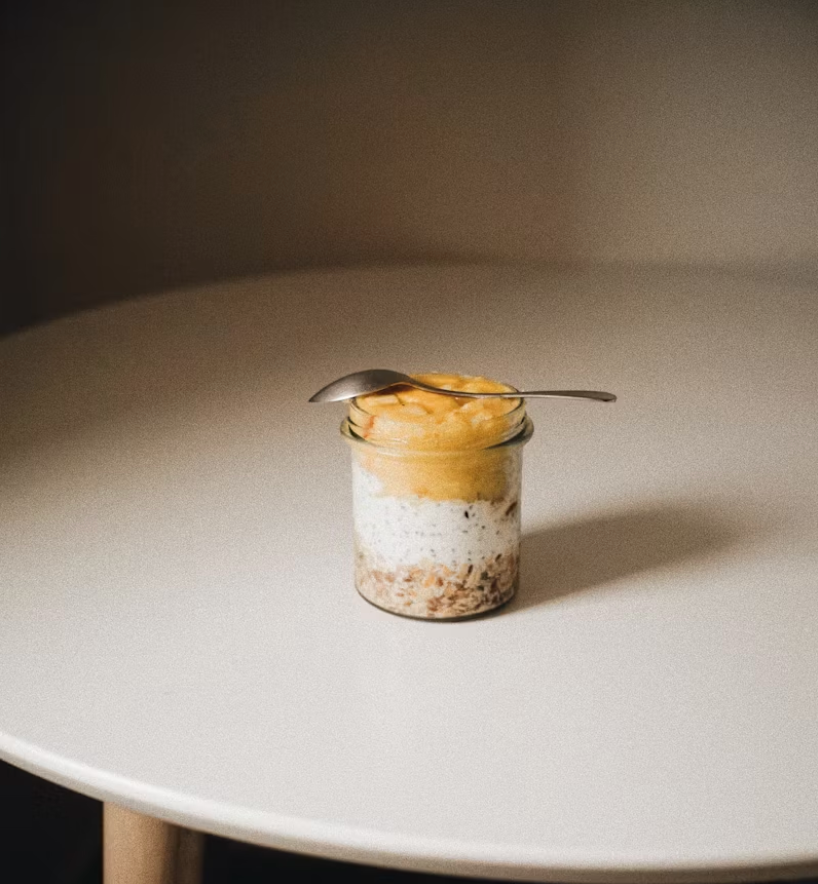
Ingredients ½ cup rolled oats - use GF, if necessary 2 Tbsp chia seeds 1 tsp orange zest 1 Tbsp golden raisins (sultanas) ½ tsp pure vanilla extract 1 cup homemade coconut milk or store-bought light coconut milk* 200g greek yogurt or soya yogurt BERRY COMPOTE: ¾ cup blueberries - I used frozen ¾ cup blackberries - I used frozen 1 tsp coconut sugar TO SERVE: 2 Tbsp almond or hazelnut butter 2 tsp coconut flakes 1 tbsp pumpkin seeds Method: OATS: Combine all the oat ingredients in a your Body Plot Jar. Give the mixture a good stir and let it sit in the fridge overnight, or for at least 2 hours. 2. BERRY COMPOTE: Add a splash of water, frozen blueberries, blackberries and coconut sugar to a small pan. Cook over medium heat for about 10 - 15 minutes. Mash the berries with a wooden spoon or a fork, they should fall apart quite easily. If not, cook them for a few more minutes. Let the compote cool at room temperature. 3. TO SERVE: Add the berry compote on top of the oats. Drizzle on your nut butter and top with coconut flakes, fresh berries and 1 tbsp pumpkin seeds which can be stored in the centre pot of your jar.
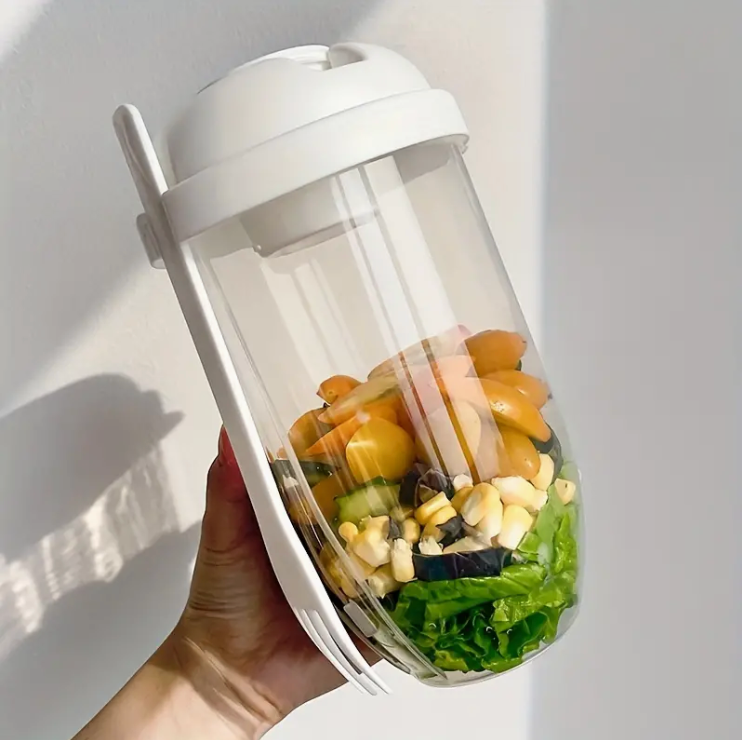
Ingredients: HONEY MUSTARD DRESSING: 2 tbsp olive oil 2 tbsp vinegar 1 tbsp mustard 1 tsp maple syrup / honey 1 tsp cumin seeds Salt and pepper to taste SALAD: 1/2 cup cucumber, diced 5 baby tomatoes, halved 1/4 cup steamed beetroot, diced 1/2 small red onion, diced 1/2 cup red peppers, diced 4 tbsp carrots, grated 100g chickpeas PROTEIN: 4 scrambled egg whites / 100g scrambled tofu, 100g lighter feta 1 tbsp sunflower seeds Method: DRESSING: Make your dressing and add it to the centre compartment of your Body Plot Jar. SALAD 2. Prepare your vegetables and layer this in your jar, one ingredient at a time. Feel free to add any additional vegetables that you like. 3. Top with your choice of protein before firmly shutting your Body Plot jar. TO SERVE: 4. When ready to eat, pour the dressing from the centre compartment over your salad followed by the seeds and serve cold.

Thai green curries are one of our favourite dishes and is so easy to make. It's also a deliciously balanced meal and is a favourite for all of our Body Plotting families. Ingredients: Sliced carrots Shiitake Mushrooms [or any is fine] 1 cubed Aubergine Mangetout Pak choi Tenderstem broccoli 1 Red bell pepper Shallots 1 red chilli 4 cloves garlic 1 thumb piece ginger 1/2 lime Bunch of coriander 1 tsp coconut oil 1 can light coconut milk 1 block of tofu or your choice of protein 3 tbsp Thai green curry paste Method: In a nonstick wok pan add coconut oil. Once melted, add the sliced onions and saute. Meanwhile, cube tofu and add to an air fryer for 15 minutes to crisp up! Add the garlic and ginger and continue to saute. Add the remaining vegetables and continue to stir on high heat for 2-3 minutes. Add the coconut milk, thai green paste and cubed tofu or your choice of protein and stir. Let this simmer for as long as you can but a minimum of 10 minutes. Before serving, stir in coriander and lime. Garnish with red chillies and serve!

Pastries typically are high in saturated fat and refined carbohydrates. Check out this quick 15-minute recipe to make a pastry that's higher in protein and contains some Vitamin D too! Ingredients: 1 Jus-roll filo pastry Sliced or diced mushrooms of choice Sliced Eatlean protein cheese Olive spread or butter for brushing Method: Roll out the pastry and pile 4 on top of one another. Using a sharp knife, cut them into three lengthways so the width is about one inch. Top each line with a brush of olive spread, protein cheese followed by mushrooms. Take the top of one line of pastry and fold it into a triangle. Keep folding and repeating until the entire line is wrapped. Brush the butter over to seal the pastry and add to an air fryer for 15 minutes. Serve with some mint greek yogurt or without any dip at all!
